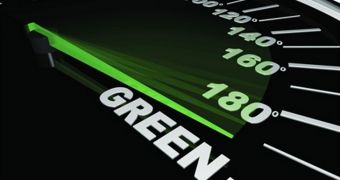Regardless of whether it wants to or not, the United Kingdom is bound to become a tad more environmentally friendly in the years to come.
This is because European Union law-makers have recently ruled that, by the year 2020, the country must see to it that it becomes home to an additional 70,000 charging points for electric vehicles.
This figure might sound pretty impressive, but, as it turns out, there are some countries that actually have it worse, Click Green informs.
Thus, it would appear that, by said date, Germany and Italy must install at least 86,000 and 72,000 publicly-accessible electric vehicle recharging stations, the same source tells us.
By the looks of it, European law-makers have made a goal of bullying several countries into installing such charging stations in an attempt to green up the Union's fleet by making eco-friendly cars more appealing to the public.
Apart from promoting the use of electric vehicles, the European Union is to try and boost the popularity of cars, trucks, and ships that run on alternative fuels.
It is expected that this goal will be reached by asking member states to work on developing the infrastructure that is needed to support a fleet running on alternative fuels.
Should things go according to plan, one such infrastructure will make it possible for cars, trucks, and ships that use alternative fuels to keep and running to move freely on European Union roads and waterways.
“This is a crucial step forward for the development of alternative fuels,” said Carlo Fidanza, the rapporteur and lead negotiator for Parliament, in a statement.
Furthermore, “It represents a balanced agreement which holds together both the ambition and the realistic approach that makes this directive the appropriate tool to create market prospects and give operators and manufacturers certainty as to the law.”
Under national plans and targets, member states must see to it that electric vehicles and cars that run on compressed natural gas can move freely in urban areas by 2020.
Trans-European Transport Networks must support free movements of trucks running on liquefied natural gas and compressed natural gas by 2025.
By the same date, ships that use liquefied natural gas should be able to move between maritime ports, and, by 2030, they should be able to do the same between inland waterway ports.
The countries that choose to also install hydrogen-refueling stations must see to it that enough of them are set in place in 2025, and that their locations enable smooth circulation.
On its website, the European Parliament details that “The plans should not add any extra costs to member states' budgets. However, they could include incentives and policy measures such as for example building permits, parking-lot permits and fuel-station concessions.”
“These plans and common standards for recharging and refueling installations should create stable conditions and investment security needed by the private sector to develop the infrastructure,” it adds.

 14 DAY TRIAL //
14 DAY TRIAL //